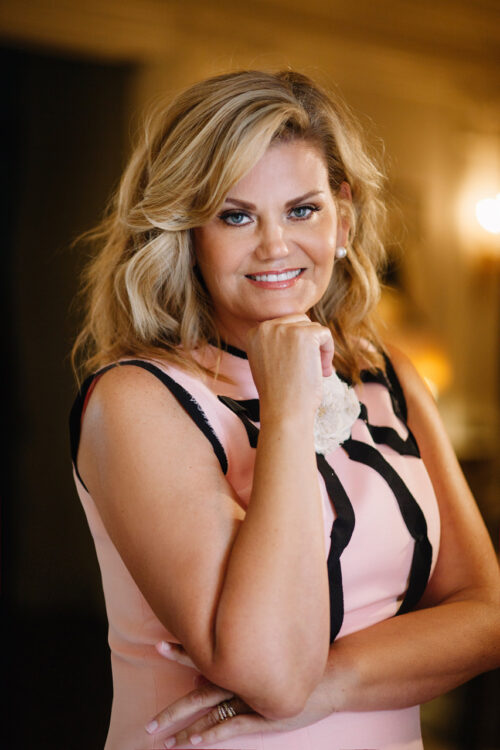
By Judy Carmack Bross
 The Illinois Governor’s Mansion
The Illinois Governor’s Mansion
The invitation said to wear something violet, the color of the official state flower of Illinois.
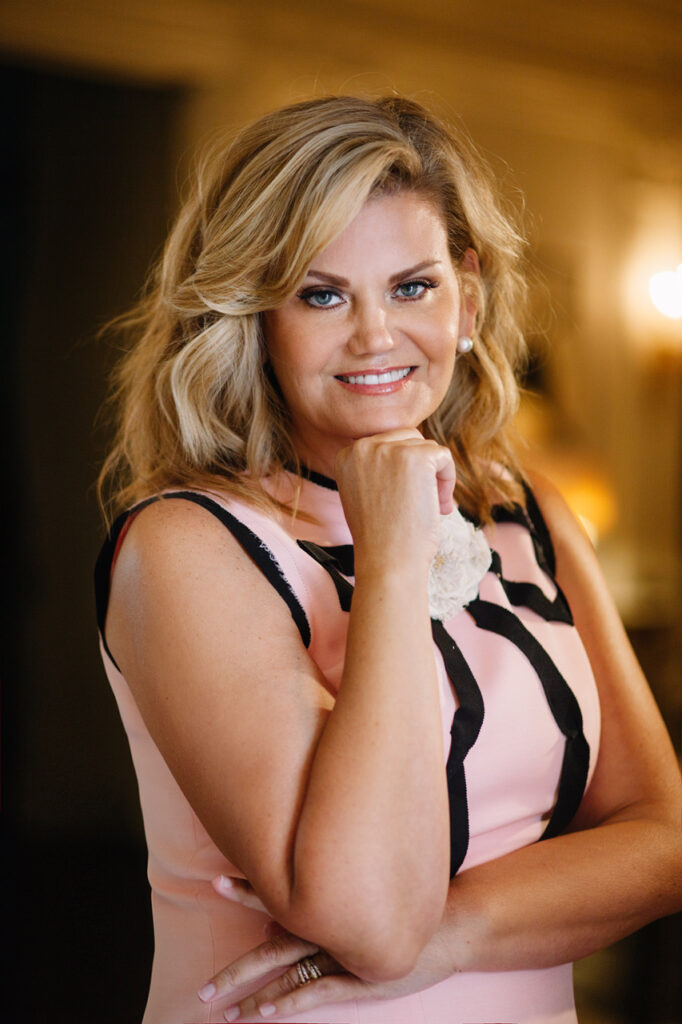
First Lady MK Pritzker
And no one wore it better than First Lady MK Pritzker this week at a luncheon where she spoke on her new released book, A House that Made History: The Illinois Governor’s Mansion, Legacy of an Architectural Treasure. Governor JB Pritzker was on hand to congratulate his wife, and greet the many friends in the audience.
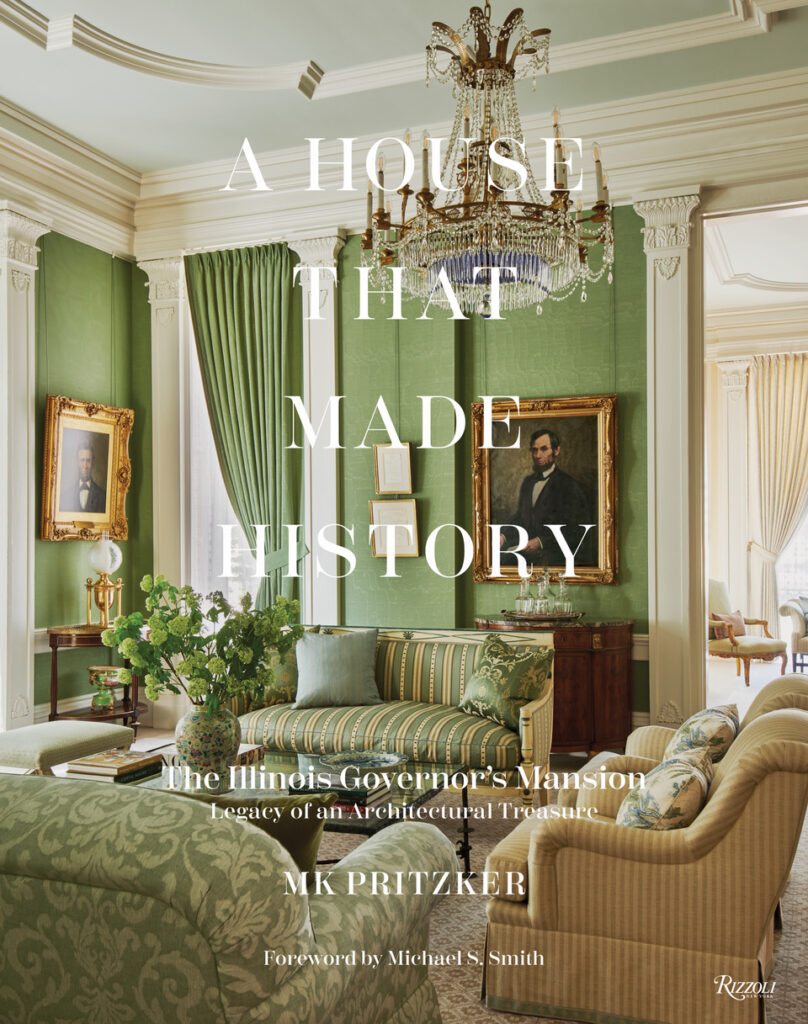
The beautiful Rizzoli-published book written entirely by the First Lady details the inspired restoration project in partnership with Michael S. Smith, interior designer for the Obama White House. Their master transformation of the Italianate-Greek Revival mansion has made it a welcoming home that celebrates the history and culture of Illinois. The largest governor’s mansion in the country, it has been the home to all Illinois governors since 1855.
“I like to say that I started with a cake well baked, and I have had the pleasure to do the frosting,” she said, referring to the restoration efforts of her predecessor Diana Rauner.
A member of the current White House Preservation Committee, Pritzker shared with auction house founder Leslie Hindman, who has served on the Illinois Executive Mansion Committee, her love of Illinois history and intention to welcome all to the Mansion in an enthralling conversation.
Hindman told the audience: “MK has completely transformed the Mansion and become an expert on its history as well as architecture and design. Her values are down to earth and she is always doing something to help someone. She is committed to the women and girls of Illinois and works with recently incarcerated women who often help decorate the Mansion at Christmas.”
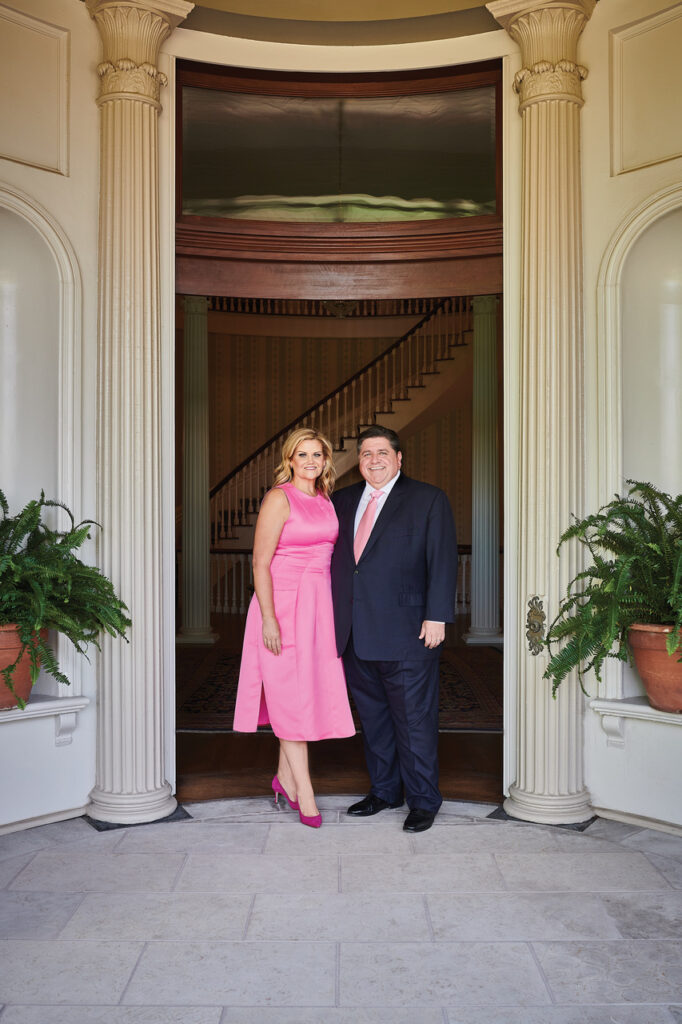
Illinois First Family
Pritzker writes: “Growing up in South Dakota I never imagined that I would become the First Lady of Illinois and that this grand old house, known as the People’s House, would become my home.
“From the first I understood that my mission was to create a hospitable environment for my husband’s work as Governor and a place that reflected his gregarious personality and love of people where he could host events for legislators, visiting dignitaries and, most importantly, the people of Illinois.”

Illinois artists are showcased in the Mansion, including Gertrude Abercrombie (painting on the left) who attended the University of Illinois and the Art Institute, and whose works the First Lady has collected.
Architect John Mills Van Osdel, who first built a bridge over the Chicago River, then the Palmer House and the Cook County Courthouse, designed the Mansion. Post Chicago fire, he built our city’s first fireproof buildings. The Mansion survived a fire and has gone through extensive renovations, including the burial of the cupola into the floor below and total redesign of staircases. Pritzker discussed the work of landscape architect O.C. Simonds, designer of Graceland Cemetery, Fort Sheridan and Lincoln Park, who added a Prairie style fountain and side garden.
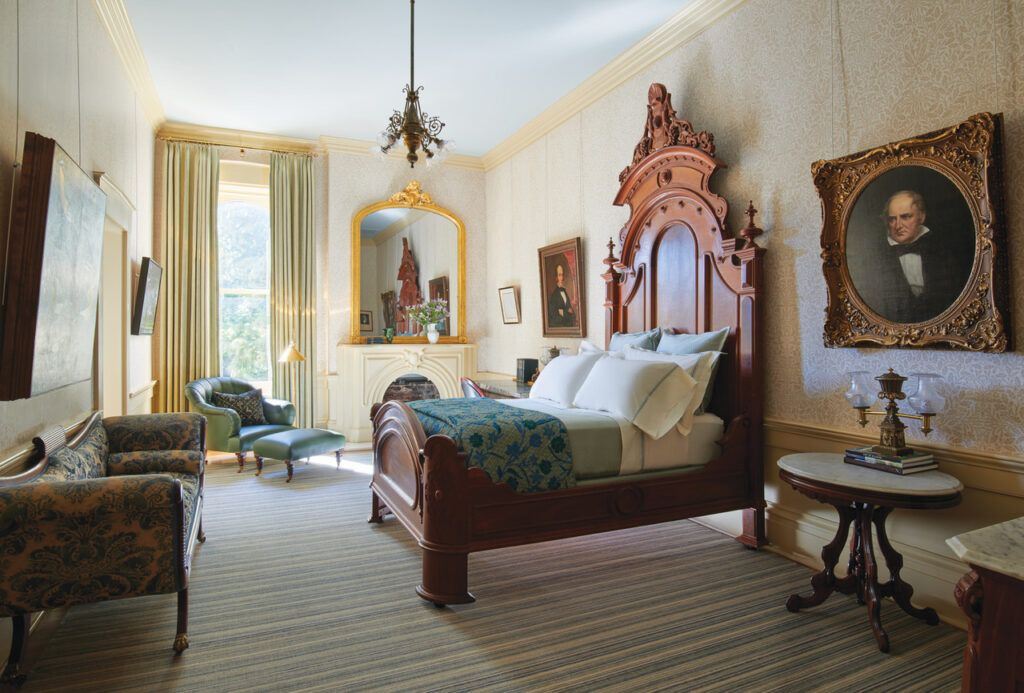 The Lincoln bed
The Lincoln bed
A lover of all things Lincoln, Pritzker spoke of when Lincoln first walked through the mansion with his friend Governor William H. Bissell. She details the collection of Lincoln memorabilia in the house including a rare portrait of a beardless Lincoln and his own bed and dresser. Those Illinois state flowers appear in a photo of Mary Todd Lincoln’s almond flour cake on her hand-painted Meissen platter, featuring violets and green leaves. “Abraham Lincoln didn’t have a big appetite but he did love Mary’s cake which is still served in the Governor’s Mansion today.”
Her obvious appreciation for Illinois history comes through in the chapters detailing each Governor and First Lady and the collections of first families which fill the state rooms.

A favorite First Lady and human rights advocate Cora Edith English Tanner
“Cora Edith English Tanner combined elegance with intellect and loved horses as I do. Most importantly, she had a real commitment to human rights,” Pritzker said. “Of all these wonderful women, she is my favorite. When there was a lynching in the South she stood up and used her voice. She wrote an article published nationally shaming this act.”
She gives much credit to Shirley Stratton whose husband William was governor from 1953-61. “She supervised major renovation and increased entertaining at the Mansion, welcoming President Dwight Eisenhower and many other important figures.”
Another favorite resident was Florence Fifer, daughter of Governor John Wilson Fifer, who served from 1889-1893. “Florence led her pony Dixie through the mansion and kept an alligator there as well. She went on to become the first woman elected to the Illinois State Senate in 1924.”
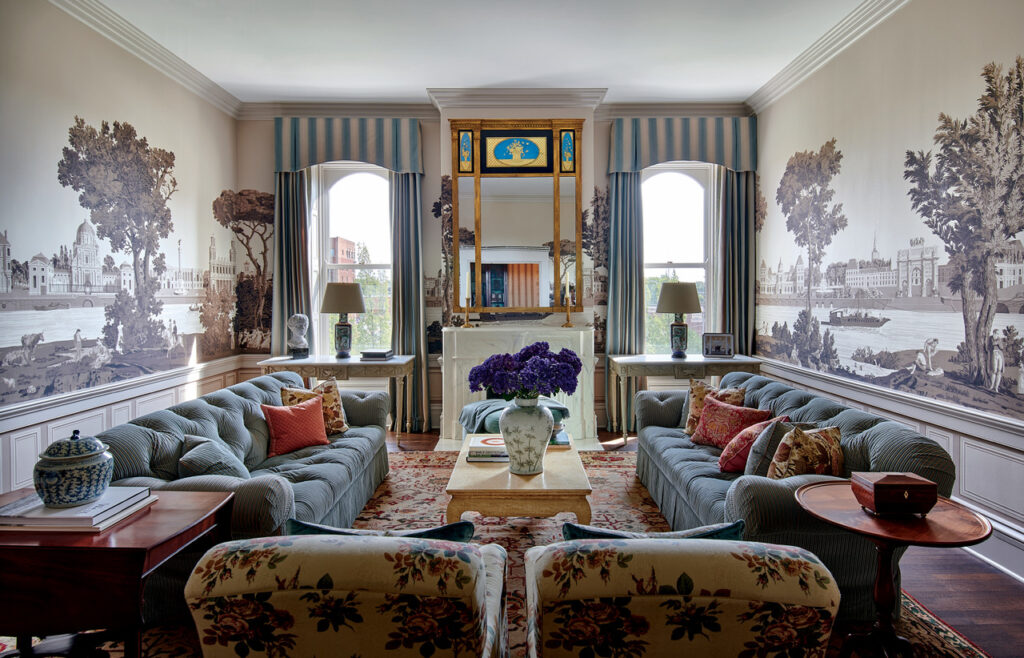
Historic pieces combined with a more contemporary and welcoming feel
Michael Smith writes in his forward: “MK’s passion for the project was clear from the outset. I think she has done a brilliant job. She has a vision of celebrating the beauty and fascinating history of the Mansion and showcases the extraordinary artistry and talent of the people of Illinois. She has transformed a stately, rather austere house into one that is at once formal and impressive and warmly welcoming.”
The book contains before and after shots detailing Pritzker’s and Smith’s collaboration which result in subtle, coloring and welcoming rooms as well as the amazing photographs taken by Richard Nickel in 1970 before his tragic death in 1972 during the demolition of the old Chicago Stock Exchange.
At her recent presentation, Pritzker quoted her hero, Abraham Lincoln who wrote about his days in Springfield where he lived very close to the Governor’s Mansion.
“To this place and the kindness of these people, I owe everything. Here I have lived a quarter of a century, and have passed from a young man to an old man. Here my children have been born, and one is buried. I now leave, not knowing when or whether ever, I may return.”—on his departure from Springfield to his Presidential inauguration February 11, 1861.



